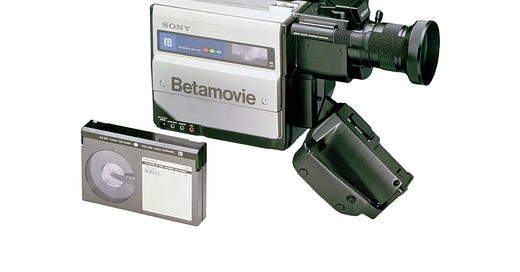Sony’s cameras have been a game-changer in the world of consumer video recording for decades. From the early days of 8mm tape to the breakthrough of 4K video, Sony has continually redefined what’s possible in home video technology. This article takes you on a journey through the evolution of Sony’s Handycam lineup, highlighting key products that not only advanced technology but also revolutionized the way we capture our memories.
1.The Portapak (1967)
The Sony DV-2400 Portapak revolutionized video recording by enabling one-person operation for home movies and outdoor filming when it was introduced in 1967. This battery-powered, self-contained analog system marked a shift from the bulky, crew-dependent television cameras of the past. The first model, comprised a black-and-white camera and a separate video tape recorder, allowing for easy transport and operation. Despite recording at lower quality than traditional studio equipment, its affordability and immediate playback capabilities emp…




